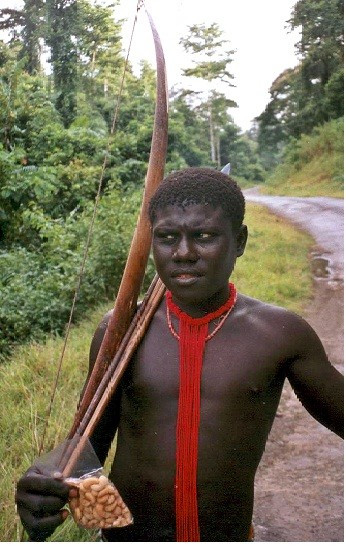Jarawa Women Forced to Dance for Food: 5 Facts about the Protected Tribe in India

Naked women and children from the ancient, protected tribe, Jarawa, were forced to dance before tourists in return for food in the Andaman Islands, India.
The incident came to light as The Observer released an undated video showing Jarawa women and children, some of them naked, being prompted to dance by tourists.
Jarawas are one of the four ancient "Negroid," tribes and are believed to be direct descendants of man's early ancestors. They are barely surviving on the tropical island of Andamans in the Indian Ocean.
According to Survival International, which works for tribals' rights worldwide, it is bribe-taking policemen who bring these unfortunate tribals and make them dance before tourists.
In 2010, Survival International reported incidents in which tourists entered the Jarawa tribe's reserve through illegal means. Tour operators and cab drivers reportedly lured the tribals with biscuits and sweets.
"This story reeks of colonialism and the disgusting and degrading 'human zoos' of the past. Quite clearly, some people's attitudes towards tribal peoples haven't moved on a jot. The Jarawa are not circus ponies bound to dance at anyone's bidding," Survival's Director Stephen Corry said in a statement.
Though the Indian law, "Protection of Aboriginal Tribes Regulation, 1956," prohibits any photographing and direct contact with the Jarawa tribe, they are increasingly under threat of poachers and tourists.
The incident has sparked widespread outrage among human rights groups and activists across the globe. The Indian government has also launched an inquiry into the incident.
"An inquiry has been ordered and it is headed by the chief secretary and director-general of police of the Andaman and Nicobar Islands," the Press Trust of India quoted India's Tribal Affairs Minister Kishore Chandra Deo as saying.
Here are some facts about the endangered Jarawa tribe:
1. The Jarawas are one of the four ancient "Negroid," tribes barely surviving on the tropical island of Andamans in the Indian Ocean. According to scientists, they are believed to be direct descendants of man's earliest ancestors who migrated from Africa 65,000 to 70,000 years ago.
2. The Jarawas are nomadic people living in groups of 40 to 50 people. They survive by hunting pigs, lizards, and fish with bows and arrows.
3. The Jarawas resisted all contacts with outsiders until 1998. After that they started coming out of their settlements in the forest to visit nearby towns.
4. In 1999 and 2006, the Jarawas suffered outbreaks of measles due to contact with outsiders.
5. Now they are facing the threat of poachers, loggers and tourists.
© Copyright IBTimes 2025. All rights reserved.



















